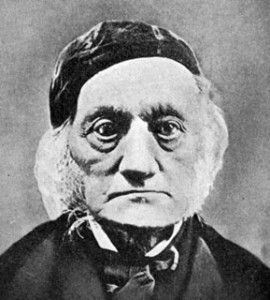If one were to google "museum quality" dinosaur replica, that would accumulate over 20,000 hits pertaining to vendors and service providers at the ready for all one's fake dinosaur needs: (read more)
O Timothy, keep that which is committed to thy trust, avoiding profane and vain babblings, and oppositions of science falsely so called: -1 Timothy 6:20
Sunday, August 2, 2015
Richard Owen Inventor Of Dinosaurs
"Sir Richard Owen, the paleontologist that 'discovered' the first dinosaur fossil, and coined the term "dinosauria", headed and created a secret society with the end goal of providing elite paleontologists with additional personal revenue. The head council members created bone facsimiles made by dripping water with heavy sediment onto a molded form to create the proper shape (see "Mother Shiptons Well" for a demonstration) that resemble skeleton parts of these imagineered creatures we have been told really existed. They created extensive logs and buried these sediment facsimilies throughout the world with specific dates and times for them to be revealed to the public.
As the preverbal torch got passed through generations of paleontologists, the secret society was maintained in secret until now. The league of extraordinary paleontologists have been careful to do all of their own testing to examine the ages of 'discovered' skeletons, whild simultaneously perpetrating the hoax by creating and burying more dinosaur bones all over the Earth. Tests like carbon dating have never been performed by people outside of the secret society, which keeps the coup of dinosaur existence alive." (read more)
Note this passage from one of Sir Richard's book:"EXTINCT MONSTERS AND CREATURES OF OTHER DAYS" The specimen on which the genus was founded by Sir R. Owen, in 1846, is unique, and was dredged up from the bottom of the sea, between St. Osyth and Harwich, (note this is just a hoot and a hollar from Mother Shipton's well) and consists of the right branch of the lower jaw. This distinguished naturalist confessed that he had seldom felt more misgiving in regard to a conclusion based on a single tooth or bone than that which he arrived at after a careful study of this specimen. Its smaller and less obvious features carried conviction to him against the showing of the larger and more catching ones. But although some naturalists for a time thought he had mistaken the fore for the back part of the jaw, yet his conclusion proved to be correct. His experience taught him that the less obvious points, which require searching out, frequently, when their full meaning has been grasped, guide to a right Fig. 92.—Skeleton of Coryphodon hamatus. (Restored, after Marsh.) Length about 6 feet. interpretation of the whole. " It is as if truth were whispered," he says, " rather than outspoken by Nature." The first additional evidence which Sir E. Owen obtained of the true nature of this ancient mammal was furnished by a fossil canine tooth brought up from a depth of a hundred and sixty feet out of the Plastic Clay during the operation of sinking a well in the neighbourhood of Camberwell, near London. This circumstance caused Sir E. Owen to remind his readers of the old proverb, "Truth lies at the bottom of a well." (page 250 - read more)
A playful prank gone too far? Or a deliberate scientific forgery?
""Death and scandal," goes a 19th century French saying, "love a shining target." Because Pierre Teilhard de Chardin stands so provocatively tall among the important thinkers and heroes of our century, he has attracted, along with much admiration and study, more than his share of detraction and gossip. The most recent and perhaps most fantastic accusation to be raised against him was leveled last summer by Stephen Jay Gould, a Harvard biologist and science writer, who in an article in Natural History magazine accused him of complicity with Charles Dawson in the manufacture of the phoney Piltdown fossil man of Sussex in the early part of this century." (Read more)
Check out "The Piltdown Gang"
Group portrait of the Piltdown skull being examined. Back row (from left): F. O. Barlow, G. Elliot Smith, Charles Dawson, Arthur Smith Woodward. Front row: A S Underwood, Arthur Keith,W. P. Pycraft, and Ray Lankester. Painting by John Cooke, 1915

As you can read from the links to each person in the painting, a couple of them have been sufficiently busted commiting science fraud.
Royal Society, Royal Society, Royal Society. All the guys at the link seem to be connected somehow to Britian's august Royal Society. Is there anything we should know about the Royal Society?
Yes, "The heirs of this magical current were saluted by the Illuminist and master-alchemist Comenius in his 1668 book, The Way of Light, dedicated to the first scientific organization in Western history, Britain’s august Royal Society. In it, Comenius addressed the first formal scientists as “illuminati” and outlined their scientific purpose, “which is to secure… the empire of the human mind over matter.” (read more)

As you can read from the links to each person in the painting, a couple of them have been sufficiently busted commiting science fraud.
Royal Society, Royal Society, Royal Society. All the guys at the link seem to be connected somehow to Britian's august Royal Society. Is there anything we should know about the Royal Society?
Yes, "The heirs of this magical current were saluted by the Illuminist and master-alchemist Comenius in his 1668 book, The Way of Light, dedicated to the first scientific organization in Western history, Britain’s august Royal Society. In it, Comenius addressed the first formal scientists as “illuminati” and outlined their scientific purpose, “which is to secure… the empire of the human mind over matter.” (read more)
So, How Did They Do It?
I don't know; maybe like this?

Today’s visitor to the Petrifying Well can see a whole host of everyday objects slowly being petrified in the cascading waters. The most popular item is a teddy bear or soft toy which usually takes between three and five months to turn to stone. Stone teddy bears are available to buy from the shop.


Today’s visitor to the Petrifying Well can see a whole host of everyday objects slowly being petrified in the cascading waters. The most popular item is a teddy bear or soft toy which usually takes between three and five months to turn to stone. Stone teddy bears are available to buy from the shop.

So Where Was This First Large Bone Found?

It is near Leeds just below the center of the island. Suxxex is toward the bottom of the island; near Oxford. St. Osyth and Harwich are to the west of London on the shoreline.
Well that's just a hoot-and-a-hollar from the where the petrified teddy bears are made. Now that's convenient.
Finding the First Large Dinosaur Bone
"People have been finding dinosaur fossils for hundreds of years, probably even thousands of years. ...There are references to "dragon" bones found in Wucheng, Sichuan, China (written by Chang Qu) over 2,000 years ago; these were probably dinosaur fossils.
Much later, in 1676, a huge thigh bone (femur) was found in England by Reverend Plot. It was thought that the bone belonged to a "giant," but was probably from a dinosaur." (read more)
Who was this "Mr. Plot"? ..."
Much later, in 1676, a huge thigh bone (femur) was found in England by Reverend Plot. It was thought that the bone belonged to a "giant," but was probably from a dinosaur." (read more)
Who was this "Mr. Plot"? ..."
"Plot had already developed an interest in the systematic study of natural history and antiquities.[3] In June 1674, with patronage from John Fell, the bishop of Oxford, and Ralph Bathhurst, vice-chancellor of the university, Plot began studying and collecting artefacts throughout the nearby countryside, publishing his findings three years later in The Natural History of Oxford-shire.[1] In this work, he described and illustrated various rocks, minerals and fossils, including the first known illustration of a dinosaur bone which he attributed to a giant (later recognised as the femur of a Megalosaurus), but believed that most fossils were not remains of living organisms but rather crystallisations of mineral salts with a coincidental zoological form." (read more)
Oxford Oxford Oxford; all these characters appear to have ties, in one way or another, to Oxford. Oxford was actually in the neighbor hood of all this activity. Is there anything we should know about the "goings on" at Oxford just prior to the first giant bone showing up in the neighborhood of both Oxford and this petrefying well?
Yes. "Just as Leo X’s corruption had ignited Luther , Clemen t VII’s shrewdness determined how the Church would deal with the proliferation of Bibles. Clement was personally advised by the cagey Niccolo Machiavelli, inventor of modern political science , and Cardinal Thoma s Wolsey, Chancellor of England. Machiavelli and Wolsey opined that both printing and Protestantism could be turned to Rome’ s advantage by employing movable type to produce a literature that would confuse, diminish, and ultimately marginalize the Bible. Cardinal Wolsey, who would later found Christ Church College at Oxford, characterized the project as “to put learning against learning.”" (read more)
Is there anything we need to know about Wolsey?
Yes, "A grand idea takes possession of Wolsey-nothing less than the founding of a splendid college at Oxford, on a scale to eclipse everything of its kind in the world, and to gather all the talent of the kingdom therein, and so to set learning against learning to uphold the cause of Rome. This, no doubt, was the origin of Cardinal College, Oxford (now Christ Church). " (read more)
Oxford Oxford Oxford; all these characters appear to have ties, in one way or another, to Oxford. Oxford was actually in the neighbor hood of all this activity. Is there anything we should know about the "goings on" at Oxford just prior to the first giant bone showing up in the neighborhood of both Oxford and this petrefying well?
Yes. "Just as Leo X’s corruption had ignited Luther , Clemen t VII’s shrewdness determined how the Church would deal with the proliferation of Bibles. Clement was personally advised by the cagey Niccolo Machiavelli, inventor of modern political science , and Cardinal Thoma s Wolsey, Chancellor of England. Machiavelli and Wolsey opined that both printing and Protestantism could be turned to Rome’ s advantage by employing movable type to produce a literature that would confuse, diminish, and ultimately marginalize the Bible. Cardinal Wolsey, who would later found Christ Church College at Oxford, characterized the project as “to put learning against learning.”" (read more)
Is there anything we need to know about Wolsey?
Yes, "A grand idea takes possession of Wolsey-nothing less than the founding of a splendid college at Oxford, on a scale to eclipse everything of its kind in the world, and to gather all the talent of the kingdom therein, and so to set learning against learning to uphold the cause of Rome. This, no doubt, was the origin of Cardinal College, Oxford (now Christ Church). " (read more)
Subscribe to:
Posts (Atom)
